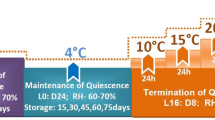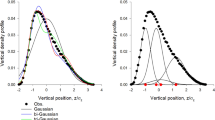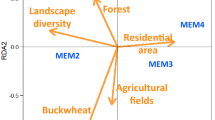Abstract
BEAMENT1–3 has described three methods for determining the transition temperature of insect cuticular waxes. For studying the influence of culture temperature on the transition point of the waterproofing wax in insect eggs, however, none of these methods is suitable, since either (a) the determinations are made on batches of several eggs, so that individual variation is obscured, or (b) the end-point is not sharply defined.
This is a preview of subscription content, access via your institution
Access options
Subscribe to this journal
Receive 51 print issues and online access
$199.00 per year
only $3.90 per issue
Buy this article
- Purchase on SpringerLink
- Instant access to full article PDF
Prices may be subject to local taxes which are calculated during checkout
Similar content being viewed by others
References
Beament, J. W. L., J. Exp. Biol., 21, 115 (1945).
Beament, J. W. L., Proc. Roy. Soc., B, 133, 407 (1946).
Beament, J. W. L., Bull. Ent. Res., 39, 4, 467 (1949).
Author information
Authors and Affiliations
Rights and permissions
About this article
Cite this article
JUDGE, P. A New Method for determining the Transition Temperature of Insect Cuticular Waxes. Nature 172, 405–406 (1953). https://doi.org/10.1038/172405a0
Issue date:
DOI: https://doi.org/10.1038/172405a0
This article is cited by
-
Electrical impedance of the labellar taste hair of the blowfly, Calliphora erythrocephala MG.
Zeitschrift f�r Vergleichende Physiologie (1971)



